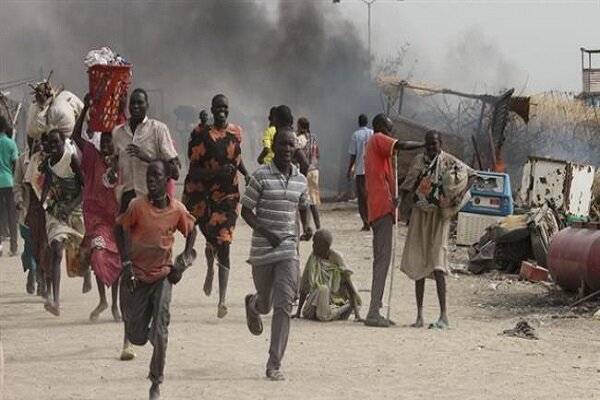Sudan’s Political Crisis: From Historical Roots to Current Deadlock

Sudan,located in the heart of Africa,is home to diverse peoples and a history marked by revolutions,coups,and civil wars. As gaining independence in 1956, Sudan has rarely experienced political stability. From the December 2018 revolution that led to Omar al-Bashir’s ousting in April 2019 to the civil war erupted in April 2023,sudan has plunged from hopes for freedom into violent conflict.To better understand today’s crisis, one must review its historical roots, political developments, and influential internal and external forces.
Pre-Colonial and Colonial Era: The Formation of Political Identity
Before British-Egyptian rule began in 1898, Sudan lacked a unified political structure; local communities were governed by tribal affiliations and religious orders. Modern education expanded during the 1930s, sparking the first elite movements. The “Graduates’ Conference” of 1938 marked the start of emerging political currents:
1.The independence movement advocating “Sudan for Sudanese,” led by the religiously based Al-Umma Party.
2. The unity movement embodied by the National Unionist Party seeking union with Egypt.
3. Ideological groups including islamists, communists, and Arab nationalists.
The colonial period also saw establishment of a modern army centralized in Khartoum-deepening divisions between centre and periphery areas like Darfur and southern regions. This divide persists today amid conflict between the official army (SAF) and Rapid Support Forces (RSF).
Independence through the 1960s: Fragile Coalitions
Sudan gained independence in 1956 but immediately struggled with governance challenges amid ethnic tensions that undermined stability from inception. Two main parties shared power while civil war erupted in southern Sudan starting in 1955. The October Revolution of 1964 toppled Sudan’s first military government inspiring hopes for democracy; however factional rivalry and ideological conflicts cut this progress short.The rise of Islamists alongside suppression of communists laid groundwork for subsequent coups during this decade.
The Jaafar Nimeiri Era (1969-1985): From Revolution to Fall
Nimeiri seized power through a coup d’état in 1969 ushering a new era defined by military rule infused with ideology. Initially supported by leftist groups as well as Arab nationalists he gradually aligned closer with Islamists.Nimeiri signed a peace agreement ending southern conflict from1972 until early1980s when enforcing Sharia law reignited fighting.In response to widespread protests exacerbated by economic crisis,Nimeiri was overthrownin1985.This period revealed that reliance on rigid ideology ignoring ethnic-religious diversity heightened instability risks within Sudan.
The Islamist Revolution & Omar al-Bashir’s Rule (1989-2019)
The military took control againin1989 backedbyIslamist leader Hassan al-Turabi.Omar al-Bashir ruled nearly three decades promising implementationofShariaand”reformoftheUmmah”but shiftedtowardspolitical repression,corruption,andprolongedwars.During Bashir’s tenure,Sudan faced three major crises:
1.The Second Sudanese Civil War leadingtopeace agreementsin2005andindependenceofsouthSudanin2011;</nbsp;</nbsp;</nbsp;</nbsp͟͟͞͞2.Darfurconflictstarting2003withlocaluprisingsagainstmarginalizationleadingtoparamilitaryJanjaweedforceseventuallyRSFformation;
3.Economic collapseandrepeatedpoliticalprotestsintensifyingsince2013culminatinginsystemicfailureandBashiroverthrow;</span+'‘)
Bashir governed primarilythroughsecurityforcesandArabtribes,butlossofricosourcesafter southSudansecession intensified economic woes.Popular uprisingscombinedcivil alliance fractions toppled him invariablyApril2019.
<bTransition Phase(2019-2021): Democratic Aspirations Amid Structural Challenges
post-Bashirs fall,general Abdel Fattah al-Burhan-ledmilitary councilassumedpower.Yetpressurefromcivil society forgedagreementwith”ForcesofFreedomandChange”-a rulingcouncilintegratingmilitarycivilspheresand appointment’AbdullahHamduk’prime minister.Aimsincludedfree election,military reforms,andnegotiated peace-withtheOctober2020JubaAgreement involvingDarfurrebels among others.Howeverthecomplex shareshipbetweenthesefactionsfueledcompetition ratherthanstability.Corruption,factionalism,andarmed group pressuresparalyzed government.
The October2021 Coup & Return Of Military Rule
InOctober2021,Burhan accompaniedbyRapidSupport Forcescommander Mohamed Hamdan Dagalooverthrew Hamdukgov’t.Hamdok detained thenreleased yet new regime failedregainpopulartrust.InternationalentitiesincludingUN,AfricanUnionattempteddialoguebutfailed.Facedwithstalemateandanimosity,theDecember2022″PoliticalFramework”triedsetting roadmap toward democracy,but disputesespeciallyover integration RSFintothearmy escalatedinto clashes.Civil War From April2023 Toward Uncertain Future
War brokeoutbetween SAF(approx130000 troops plusair support) versusRSF white agile100000 forcesdominatingKhartoum,Darfur,Kordofan.Battlefrontsplitcountry effectively:numberofficialgovernmentholdsportsudaninthenorthwhilelocal administrations alignedto Dagalo dominate western regions.Varyingpositions emergedamongpolitical-civicactors:
1.ForcesofFreedom&Changeinitiallysilent,latercalledrestorepoliticalprocess;
2.Islamistpartiesandsocial conservativesbackedsaf;
3.Darfurfightersheldcenter stance condemned RSF atrocities;
4.Youth movements,resistance committeesblamedboth sidesfor national destruction.
Sudan faces two possible trajectories: firstly,military victory bringing relativeordertoKhartoum but postponing civilian rule.Secondly,countrypartitionintovariegated zones akin Libyan model-the gravest risk ahead.


